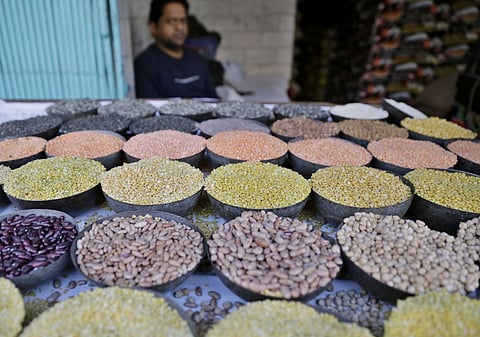It is potentially ‘stagflation’
In no uncertain terms the World Bank in its ‘Global Economics Prospects’, released June 7, has warned of an imminent stagflation, or a phenomenon of stagnation in the economy combined with high inflation.
The world is yet to recover from the worst recession since the 1970s caused by the pandemic. The current deceleration in the economy is the steepest in 80 years.
The Russia-Ukraine war has further disrupted economies with high food and energy inflation and disruption supply chains. The world is experiencing a stagflation first time after 1970s.
Many countries could avert another recession, but the stagflation would continue for years to come. World Bank Group President David Malpass said:
The war in Ukraine, lockdowns in China, supply-chain disruptions, and the risk of stagflation are hammering growth. For many countries, recession will be hard to avoid.
This comes “with potentially harmful consequences for middle- and low-income economies alike,” said the report.
Global economic growth will take a steep dive to 2.9 per cent in 2022 from 5.7 per cent in 2021. In January, 2022 the World Bank forecast the economic growth in 2022 to be 4.1 per cent, before the Russian invasion of Ukraine. The stagnation in economic growth would continue till 2024.
“As a result of the damage from the pandemic and the war, the level of per capita income in developing economies this year will be nearly 5 per cent below its pre-pandemic trend,” says the forecast. Of the developing countries, according to this report, 40 per cent would report such a dip in per capita income.
The stagflation of the 1970s still haunts the world. To control high inflation, countries increased interest rates drastically. This in turn led to stagnation in the economy and also increased debt burdens of countries.
These triggered a series of economic collapses in developing countries, and the decade that followed is known as the “lost decade” in terms of growth. It ultimately led to a global recession in 1982.
The latest ‘Global Economics Prospects’ has made comparison of the current situation with that of the 1970s leading to stagflation. “The danger of stagflation is considerable today,” says the report.
The first sign is that of the low economic growth currently: between 2021 and 2024, global growth is projected to have slowed by 2.7 percentage points. This is more than “twice the deceleration between 1976 and 1979”. This effectively means that the current decade ending 2030 will be one of the slowest growth rate periods.
The second sign is that of high inflation. “With inflation now running at multi-decade highs in many countries and supply expected to grow slowly, there is a risk that inflation will remain higher for longer than currently anticipated,” the report said. The Bank forecasts that inflation rate will moderate to 2019 level (2.3 per cent) by end of 2024 only, but with a caveat: the uncertainties have a high chance of further increasing it also.
However, there are some other economic indicators that the World Bank says offer hope. Like, the dollar is stronger than in the 1970s; oil prices are still not that high as of the 1970s; and the world is more of a free economy than that period.


